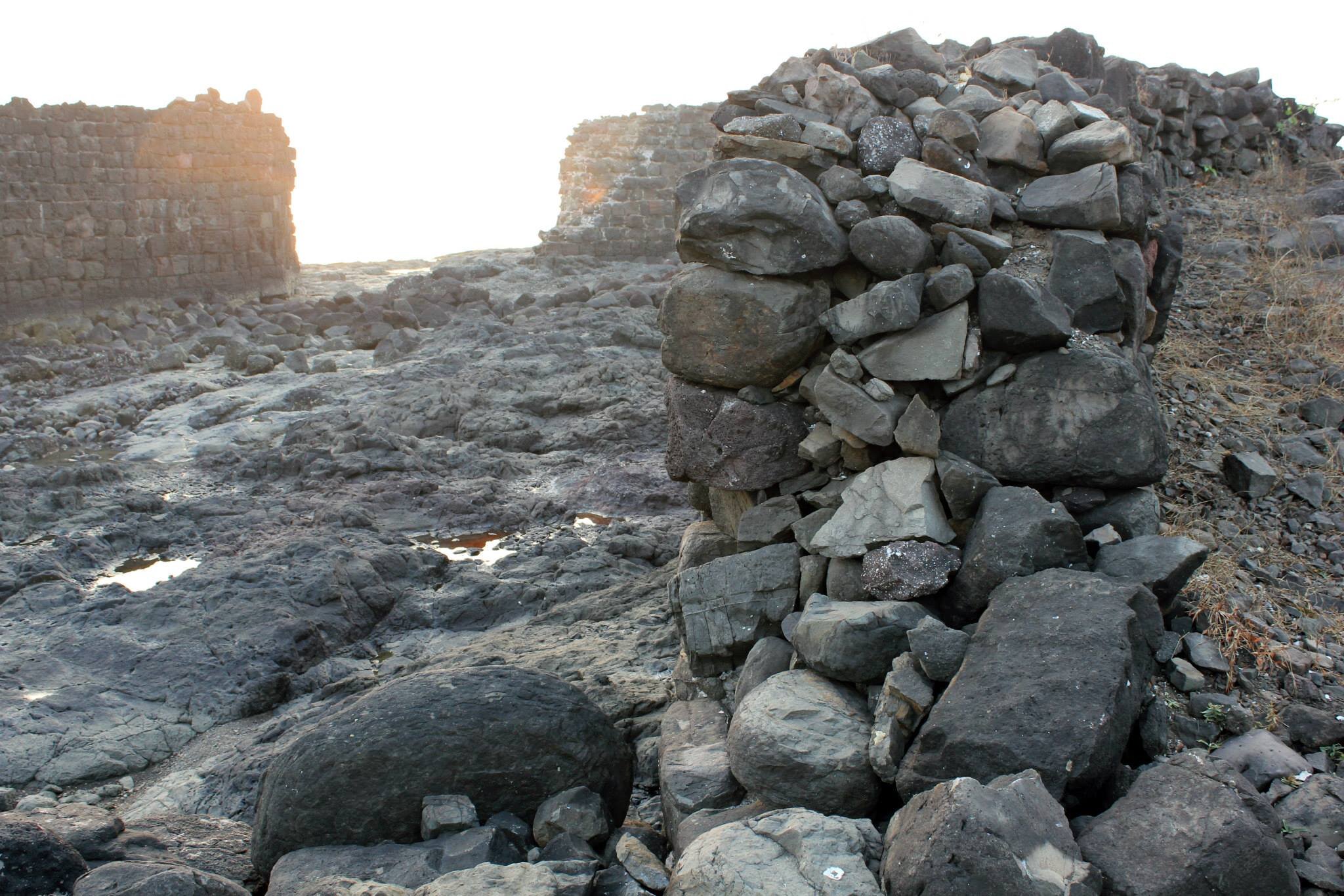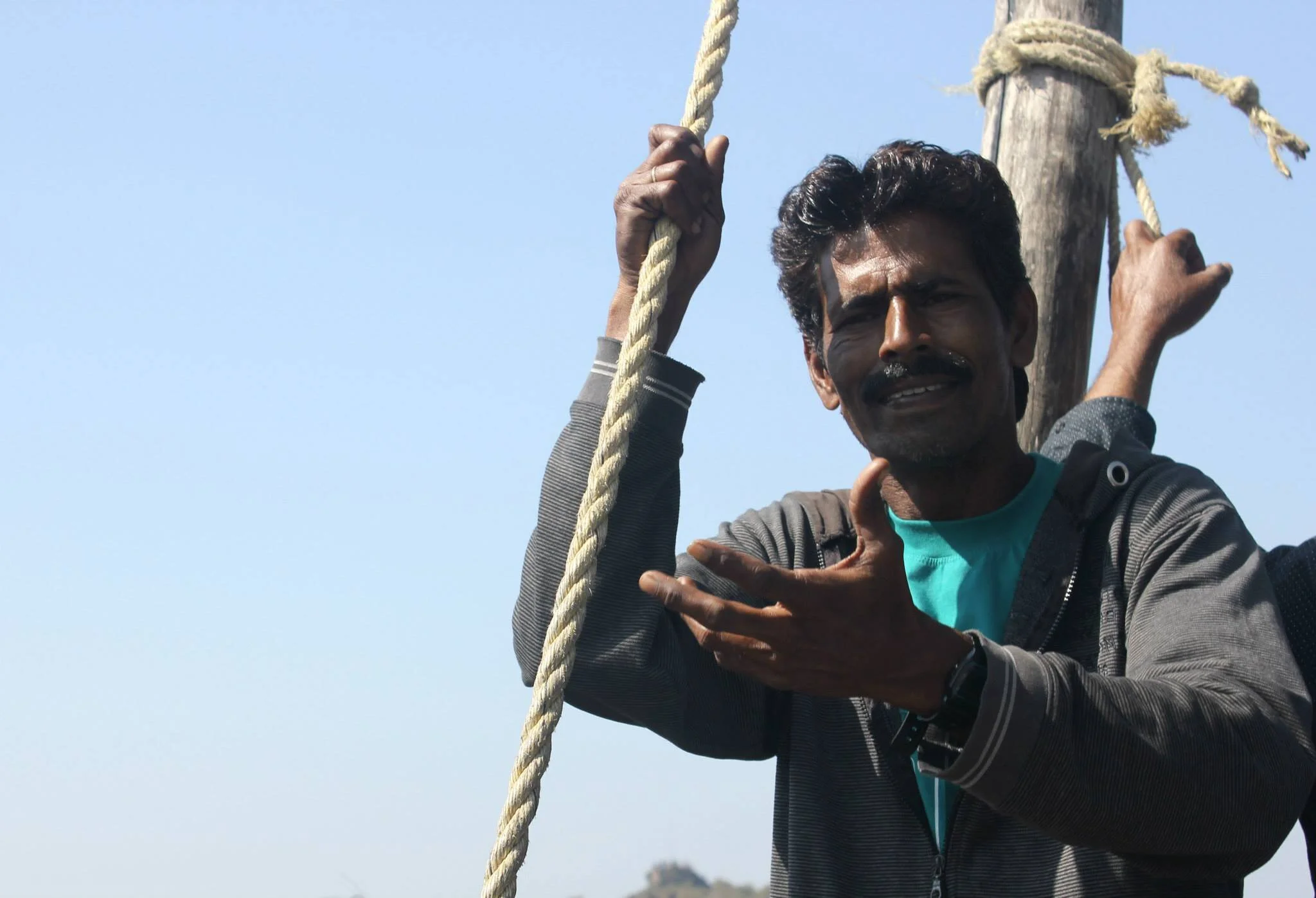Lots of people take the Konkan Railway from Mumbai down to Goa, but relatively few take the time to explore the actual coast it follows. Why? Well, because Goa is where the party’s at. Goa has the best beaches. Goa has the best hotels. We get it, Goa is the best.
The Konkan’s beaches, perhaps with a few exceptions, may not be as pretty. Its hotels – with quite a few exceptions, actually, if you know where to look – may not be as good (and certainly nowhere as plentiful). There is no party scene. But can Goa boast real pirate castles? A deserted island fort that you can visit totally alone? A serendipitous meeting of two shipbuilders from Rotherham (who sadly receive no further mention). No – it cannot. Can the Konkan? It can, yes.
Murud: The best beach close to Mumbai?
The journey to Murud, a little-known destination on the Maharashtran coast around 150 kilometres south of Mumbai, took approximately six hours – not necessarily because the roads are rubbish, but because there’s a lot to take in en route.
Once we had escaped Mumbai’s urban sprawl and the subsequent land of the shipping containers, the ‘real’ India started to appear. And very nice it was too – steep forested hills, colourful villages and glimpses of the Konkan railway, one of India’s most aesthetically pleasing lines. And about five miles from Murud the first palm trees started appearing; always a good sign for the beach-hungry traveller.
I envisaged Murud being a kind of exclusive Goa. No European I know has heard of it, nor many Bombayites I had spoken to. And on arrival at the government-run resort just back from the main beach, it was clear there weren’t many other people around (apart from a party of Whirlpool engineers from Pune, who partied hard, as refrigerator designers and washing machine engineers tend to do, long into the night).
Catching a boat to Kasa Fort
During a stroll on aforementioned beach I noticed the imposing silhouette of Kasa Fort – an island fortress four kilometres out to sea – though at this stage I had no idea what it was. I asked the security guard, and to compensate for his lack of English he thought he’d repeat “Kasa Fort” until any other thoughts my mind may have been harbouring were totally banished.
“My friend has boat, 350 rupees,” he said, gesturing towards the island. “Meh, when in Rome,” I replied, before verbally hitting his befuddled face with a firm “OK, boss”.
Before I knew it, I was speeding off in a well-worn boat, part of which fell off as I hurled myself aboard, to an island whose most recent function was a high-security prison. There were two chaps on the boat with me, neither of whom spoke English or made even the slightest effort to acknowledge my existence.
“Please smile at me,” I asked them, “I need some reassurance that you’re not going to abandon me.” Nothing. Time to up the ante. “A little kiss maybe, just on the cheek?” Nada. It was worth a try.
We arrived after 15 slightly uncomfortable (in both a physical and social sense) minutes at sea, when I was unceremoniously dumped into the shallow waters, thus ruining my Peacocks’ finest espadrilles. My boat chums then sped off into the sunset (literally), giggling like schoolgirls (probably).
Kasa Fort: A high-security prison, all to yourself
Kasa Fort – a complex of crumbling walls, arches and steps – is utterly decrepit. And most of it is black, to the extent that it reminded me of Iceland’s barrenness, or the shores of hell. It’s more modest than Janjira Fort, a few kilometres to the south-east, but it’s a place you can have all to yourself, though I can’t decide whether this is nice or slightly terrifying.
After 45 minutes of conflicting emotions and initiating some solitary prison-style role play, which sounds disgusting, I can safely say I’ve never been so relieved to hear the spluttering of a distant outboard motor and the sight of two unfriendly men in a boat coming for me. My heroes.
Janjira Fort: A real pirates’ castle, and an impenetrable one to boot
I was only in Murud for one night, but it was a bit of a wrench to leave. It really is rather nice – at the northern end of its long, perfectly clean beach is a huge palace overlooking the sea; in front of you is a centuries-old fort and at the southern end you can sit on an elderly donkey for a couple of rupees. This place really has everything, but this morning it was time to depart for the star attraction: Janjira Fort.
Located just 500 metres offshore from Rajpuri, a run-down fishing village not lacking in charm, Janjira is the only fort on India’s west coast to have never been conquered. By anyone, ever, despite the best efforts of the Dutch, the Marathis and those bastards from the East India Company. So who the hell did it belong to? Well, since you asked so nicely, it was built by the Siddis – descendants of sailor-traders from the Horn of Africa – way back in 1140. And yes, they were pirates. Bloody good ones.
Getting there and back costs just 20 rupees. I hung around on the quayside waiting for 29 others – for the boat only sails when 30 people are assembled – and after they and a few hundred others turned up we edged our way out of port. En route we were treated to an explanation of Janjira’s history by one of the on-board guides, whose speech was delivered entirely in Hindi and entirely in song. I had no idea what he was singing, but I was completely captivated, which proved a pleasant distraction from the ‘how many people can we fit in the boat’ game I was unwittingly a part of.
On arrival at Janjira I knew I was in for a treat. The gateway is pretty tiny given it’s the only entry point to the 22-acre fort, and once I climbed up the steps it was, to use an old cliché, like stepping back in time. Or, as I tried to joke to one of my Indian counterparts, like a set from Indiana Jones. He humoured me with a smile sans eye contact.
Built in the 15th century, Janjira’s 19 rounded bastions are still intact, as is each facility inside – from a freshwater lake (amazingly, when the fort was being built, a natural spring was discovered, so everyone who lived there had on-demand access to fresh water) to a collection of canons and a slowly decaying mosque.
It’s spellbinding, and I could have spent all day there. Hindi-only guides are available to show you around – it’s not possible to keep up with everything but I got the gist, and my guide was so charismatic that, to be honest, not understanding everything didn’t matter. Besides, there was a small group of university students visiting for the day who didn’t mind translating the odd detail. And the details were odd, but I’ll let you discover them for yourself when you come here, which is the solitary aim of this post. You think I’m writing this to entertain you? You’re so naïve.
I was looking forward to the journey back to shore as our guides promised to rig the sails (we were pulled there by a tug – tugged, if you will), but first we had to clamber aboard. Everyone thought they were being polite by obligingly moving towards one end of the boat so that others could board, which had the inevitable effect of making the vessel tip to a fraction of the point of no return. It was mildly exhilarating.
Chiplun: A handy stop-off between Mumbai and Goa
After departing Murud-Janjira we proceeded to Chiplun, which I presumed would be no more than a handy stop-off roughly equidistant between Mumbai and Goa. And while the town is nothing to write home about, or at least blog about, the surrounding hills are.
I rested my head at the Riverview Resort (when one travels to India one must make the effort to slum it, you know), which affords genuinely stunning views down to the Vashishsti River and the Konkan Railway. It also has the most spectacular pool I’ve seen in India so far, perfectly located for watching the sunset. I spent the night tucking into a creamy Malai Kofta, rather pleased with myself for discovering somewhere so bloody lovely, minus any other western faces.
Ganpatipule: Probably the best beach on the Konkan coast
Next stop Ganpatipule, a little further down the coast, which Maharashtra Tourism labels as “one of the most spectacular beaches along the Konkan coast”. And they’re not wrong – it’s as pretty as anything I’ve seen in Goa, minus the over-development.
Its appeal goes beyond aesthetics, though – pilgrims visit Ganpatipule’s temple and walk around the hill whose base it sits on as a mark of respect. So a little bit of culture ‘pon the beach, which is nice.











